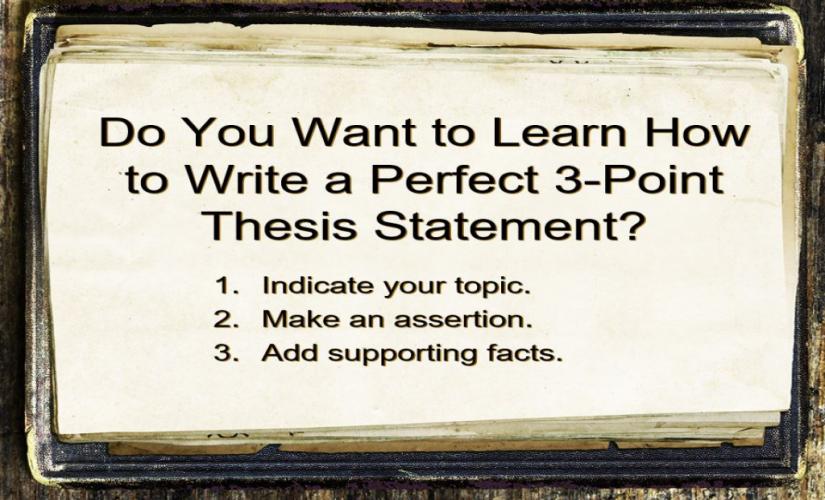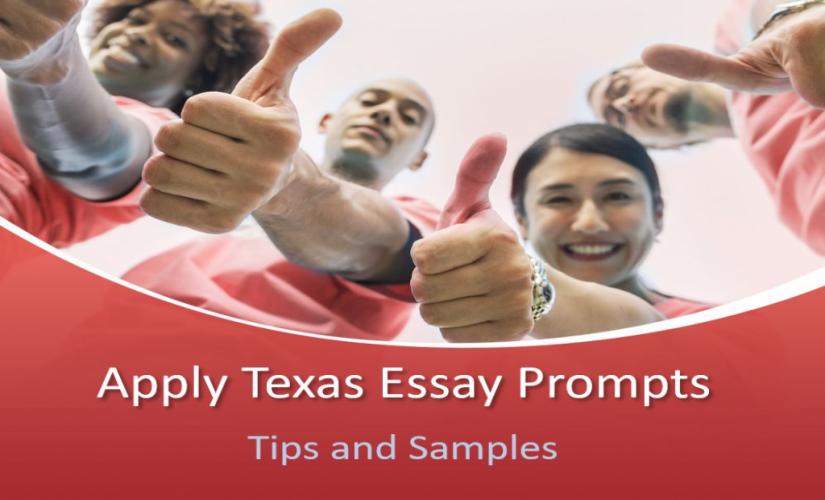How to Write a Perfect 3-Point Thesis Statement
- Icon Calendar 5 June 2024
- Icon Page 2864 words
- Icon Clock 13 min read
A 3-point thesis statement is a coherent sentence that integrates the three essential components of a standard thesis statement, which include a topic, an assertion, and reasons justifying a specific claim. Basically, any topic should narrowly define its subject. In this case, defending the main claim requires writers to highlight a number of reasons. It is possible through the application of conjunctions. While formulating a working 3-pronged thesis statement, it is crucial to ensure that this sentence is question-focused, debatable, precise, and concise. Using non-technical language, concrete, and transpicuous words can help to improve its clarity. To make it stand out, a perfect 3-point thesis statement should be an original, specific, justifiable, and socially relevant idea derived from facts.

What Is a 3-Point Thesis Statement and Its Purpose
According to its definition, a 3-point thesis statement is a specific type of thesis statement that outlines the main argument or claim of an essay and provides three distinct parts to support it. The purpose of a 3-point thesis statement, which cannot be a question, is to provide a clear and organized roadmap for readers so that they can be familiar with the entire content, and it is usually located at the end of the introduction paragraph as a single sentence (or two), according to academic writing rules (Graff & Birkenstein, 2016). Besides, this sentence acts as a guide to readers on what essays entail, including the arrangement of ideas adopted. In this case, a strong thesis statement should precisely define an essay topic by considering a definition of the main claim, having an applicable case, and covering motivations to back up the case (Jackson, 2014). Therefore, in order to answer what is a 3-point thesis statement, this sentence consolidates the three key segments, which include a subject, an assertion, and pertinent reasons to support the main claim.

Formulating a 3-Part Thesis Statement
Topic selection.
Generally, the question prompt in schools, colleges, and universities states a specific essay topic, and, at times, the writer is required to present a single sentence. It is prudent for students to brainstorm on a few topics before selecting a particular theme (Graff & Birkenstein, 2016). Basically, each argument made in an academic paper requires feasible proof. Rather than writing “democracy,” it would be wise to write “the American democracy.” Thus, the topic selected ought to be a narrow description of an essay subject.
Making an Assertion
The process of developing a strong claim begins by identifying the relationship between your idea and available information. For instance, integrating ideas, the subject, and known facts will help in formulating a viable argument (Jackson, 2014). Rather than developing a personal claim, writers should make an argument that is socially relevant and easily contestable. In this case, each piece of evidence stated will aid in developing a topic sentence in the body of an academic essay. Moreover, the basis highlighted in a working paper and the order of ideas adopted in segments determine the number and arrangement of the body paragraphs.
Support Inclusion
The last part of a 3-point thesis statement involves providing reasons to back up your opinion. In particular, the application of conjunctions, such as “because,” “as,” “due,” “although,” and “since,” helps in integrating the main claim and justification (Graff & Birkenstein, 2016). Then, highlighting shreds of evidence can be helpful, especially in determining the extent to which writers will expound their claims. In this case, this attitude determines the length of a final paper. However, the process of developing a 3-part thesis statement ought to remain adaptable until authors complete writing papers (Jackson, 2014). Basically, writers may discover vital information, such as new evidence that is relevant to a good essay topic. Hence, after completing a paper, it is necessary to go through an essay and identify the information that needs to be included or eliminated from a 3-point thesis statement.
Receive personalized assistance from our writers, ensuring your paper is both original and tailored to your needs.
What Questions to Ask
Usually, the question prompt guides writers during the formulation of a good claim by presenting the topic. For instance, a relevant 3-point thesis statement must be present at the beginning of any paper, usually in the first paragraph, as the last sentence (Sharp, 2011). In this case, formulating a debatable and question-focused argument, followed by supporting statements or phrases, is the first step toward having a good tentative thesis, which should be precise and concise. In turn, specificity can be achieved by revising an argument several times. In turn, students can select the most specific idea from a few formulated arguments to answer the same question (Sharp, 2011). When developing a 3-point thesis statement, it is important to ask corresponding questions that help them to clarify and refine their main arguments and ensure their claims are strong and effective. Hence, before presenting their essays, writers should answer the following questions:
- What is my main argument or claim? – Clearly define the central idea you want to convey in your essay.
- Does my thesis statement have the three key elements? – Identify at least three supporting points that will help you make your case.
- Is it question-focused? – Make sure your claim directly responds to a particular essay prompt or research question.
- Is my thesis statement arguable? – Check that your thesis presents a valid claim that others might dispute, providing room for debate.
- Is it precise and concise? – Ensure your sentence is straightforward and not too wordy.
- Does my thesis statement provide a roadmap for my essay? – Your statement should outline the main points that will be discussed in the body paragraphs.
- Is it specific enough? – Avoid vague language and be as precise as possible in stating your argument and supporting points.
- Does my statement take a clear position on the topic? – Make sure your sentence clearly states your stance and does not present a neutral or ambiguous position.
- Can I support my thesis statement with evidence? – Consider whether you have access to enough reliable information to back up your claims.
- Does it reflect the scope of my essay? – Ensure your claim is neither too broad nor too narrow for the length and depth of your essay.
Starting a 3-Point Thesis Statement
A vague thesis statement is incomprehensible to readers rendering an essay unclear. Being part of a final paper, writers must follow all the instructions regarding academic writing (Miller & Pessoa, 2016). In this case, writing a strong 3-point thesis statement requires writers to adopt non-technical language and eliminate vague and abstract words. The only secret to ensuring the clarity of a thesis is by revising it as many times as possible. Accordingly, writers should not assume that readers understand technical language unless the question prompt instructs otherwise (Zhang et al., 2022). In turn, some examples of 3-point thesis statement starters can help students provide a solid foundation for their essays. They look like:
- Research shows that [Main Argument] because [Reason 1], [Reason 2], and [Reason 3].
Example: “Research shows that early childhood education is crucial because it enhances cognitive development, fosters social skills, and prepares children for academic success.”
- To improve [Situation], [Main Argument] must address [Reason 1], [Reason 2], and [Reason 3].
Example: “To improve public transportation, cities must invest in infrastructure, increase service frequency, and ensure affordability.”
- The implementation of [Main Argument] can address [Reason 1], [Reason 2], and [Reason 3].
Example: “The implementation of renewable energy policies can solve the problem of climate change, reduce air pollution, and create green jobs.”
- [Main Argument] is necessary to tackle [Issue] because [Reason 1], [Reason 2], and [Reason 3].
Example: “Stricter data privacy laws are necessary to tackle cybersecurity threats because they protect personal information, prevent data breaches, and build public trust.”
- Studies indicate that [Main Argument] is due to [Reason 1], [Reason 2], and [Reason 3].
Example: “Studies indicate that a plant-based diet is beneficial due to its positive impact on health, environmental sustainability, and animal welfare.”
- [Main Argument] is supported by [Reason 1], [Reason 2], and [Reason 3].
Example: “The legalization of marijuana is supported by its medical benefits, potential for reducing criminal justice costs, and positive economic impact.”
- To achieve [Objective], [Main Argument] should include [Reason 1], [Reason 2], and [Reason 3].
Example: “To achieve energy independence, the government should invest more funds in renewable energy sources, increase energy efficiency, and develop smart grid technologies.”
- [Main Argument] is vital for [Reason 1], [Reason 2], and [Reason 3].
Example: “Addressing climate change is vital for preserving biodiversity, ensuring public health, and maintaining economic stability.”
- Considering [Reason 1], [Reason 2], and [Reason 3], [Main Argument] is essential.
Example: “Considering the rise in mental health issues, the importance of mental health education in schools is essential.”
- Effective [Main Argument] requires [Reason 1], [Reason 2], and [Reason 3].
Example: “Effective climate policy requires international cooperation, investment in green technology, and stringent regulatory measures.”
Examples of 3-Pronged Thesis Statements
Sample Thesis: People cannot achieve the American Dream due to the continual racial discrimination, corrupt justice system, and ineffective education policies across many states.
Step 1 – Topic: “The American Dream.”
Comment: It is a socially relevant topic.
Step 2 – Assertion : “People cannot achieve.”
Comment: The writer’s position is that the American Dream is unrealizable, a specific claim that will act as an essay’s basis.
Step 3 – Support With Three Points :
- Continual racial discrimination.
- Corrupt justice system.
- Ineffective education policies across many states.
Comment: There are three reasons justifying the writer’s main claim.
This is a perfect example of a thesis statement incorporating the three key elements. Basically, every American citizen yearns for an ideal America where equality of opportunity is available for all people. Hence, the “American dream” is a feasible topic. While some individuals may oppose this claim by highlighting the reasons why it is possible to have a perfect America, this essay will focus on the impossibility by having three body paragraphs based on the three reasons. In turn, other examples of a strong 3-point thesis statement are:
- To combat environmental pollution, reducing plastic use should focus on promoting reusable materials, implementing stricter regulations, and increasing public awareness.
- Online learning offers many advantages for students, including flexibility, reduced educational costs, and better access to updated courses and resources.
- Regular exercise classes positively impact children’s mental health by reducing anxiety, improving mood, and enhancing cognitive function.
- Effective public health policies should include accessible healthcare services, comprehensive vaccination programs, and robust health education.
- Workplace diversity enhances creativity, improves employee satisfaction, and increases company performance.
- Addressing the issue of childhood obesity involves promoting physical activity in schools, regulating junk food advertising to children, and encouraging healthy eating habits at home.
- Teaching financial literacy in schools is critical for preparing students’ financial independence, helping them to make informed decisions, and reducing debt likelihood.
- Integrating arts and culture subjects into education fosters creativity, improves academic performance, and enhances students’ emotional and social well-being.
- The strict regulation of social media platforms is crucial to protect user privacy, prevent the spread of misinformation, and reduce the cases of online harassment.
- E-books are advantageous over printed books due to their portability, lower cost, and environmental benefits.
Making Your 3-Point Thesis Statement Outstanding
A well-formulated 3-point thesis statement shows the writer’s ability to comprehend and analyze the topic successfully. Rather than simply stating a general fact and providing common reasons, writers ought to show their position by coming up with an informed argument justifiable upon reviewing the available information (Stadler & Conyers, 2020). In this case, if you want to know how do you write a 3-point thesis statement, the clarity of a central claim is one way of making it non-biased. By taking a specific approach, writers eliminate the need to announce the subject, which needs to weaken it. Secondly, writers should make a reasonable premise that neither simplifies nor overcomplicates the argument (Stadler & Conyers, 2020). Furthermore, it is advisable to make ideas rather than adopt formula statements or general ideas. Therefore, a good 3-part thesis statement is an original, specific, justifiable, and socially relevant idea derived from facts. Here are some examples separated by academic levels to consider:
High School
- Encouraging reading in high school students enhances vocabulary, improves critical-thinking skills, and fosters a lifelong love of learning.
- Implementing school uniforms in high schools promotes equality, reduces distractions, and enhances school safety.”
- Extracurricular activities help high school students to develop time management skills, build social connections, and improve academic performance.
- Effective bullying prevention programs in high schools should include education on empathy, strict enforcement of anti-bullying policies, and support systems for victims.
- High schools should incorporate environmental awareness into their curriculum to educate students about climate change, promote sustainable practices, and encourage community involvement.
- Study abroad programs benefit college students by exposing them to new cultures, enhancing their language skills, and improving their academic perspectives.
- Developing time management skills in college students leads to improved academic performance, reduced stress levels, and better preparation for future careers.
- College education enhances learning experiences, provides access to vast resources, and prepares students for their future lives.
- Providing comprehensive mental health services on college campuses can reduce student stress, improve academic outcomes, and promote overall well-being.
- College students need to participate in volunteer work to foster community engagement, enhance personal growth, and improve employability.
- University research opportunities allow students to develop critical-thinking skills, gain professional experiences, and contribute to their field of study.
- Promoting diversity and inclusion on university campuses enriches the learning environment, broadens perspectives, and fosters social harmony.
- Internships during university studies provide practical experience, enhance job prospects, and help students to apply theoretical knowledge.
- Financial literacy courses allow university students to prepare themselves to be independent individuals, manage their debts, and promote responsible spending habits.
- University sustainability initiatives can reduce campus carbon footprints, educate students on environmental issues, and encourage eco-friendly practices.
- Master’s programs should focus on leadership development to prepare students for managerial roles, foster innovation, and enhance organizational effectiveness.
- Master’s courses enhance advanced research skills by offering specialized coursework, providing access to research facilities, and encouraging academic publishing.
- Networking opportunities help master’s students to build professional relationships, gain professional insights, and increase career opportunities.
- Promoting interdisciplinary studies in master’s programs broadens knowledge, fosters innovative solutions, and enhances students’ adaptability in various fields.
- Master’s courses should emphasize professional development to improve job readiness, enhance communication skills, and foster lifelong learning.
- Ph.D. programs should aim to contribute original research by encouraging independent studies, providing mentorship, and facilitating academic publishing.
- Incorporating teaching experience prepares Ph.D. students for academic careers, improves communication skills, and enhances subject mastery.
- Teaching research ethics in Ph.D. courses ensures the integrity of scientific work, promotes responsible conduct, and protects research subjects.
- Effective dissertation writing requires developing a clear research question, conducting thorough literature reviews, and presenting findings coherently.
- Ph.D. students benefit from collaboration and networking opportunities by gaining diverse perspectives, accessing resources, and advancing their careers.
In conclusion, a 3-point thesis statement is one of the fundamental components in academic writing, ensuring clarity and direction for readers. By incorporating a precise topic, a clear assertion, and three supporting reasons, writers can effectively communicate their arguments. This approach not only aids in organizing a valid essay’s structure but also enhances the reader’s understanding. In turn, crafting a thesis statement that is question-focused, debatable, and concise can significantly improve the overall quality of any essay. Through careful revision and consideration of these elements, writers can create compelling and robust claims that form the backbone of successful essays.
Graff, G., & Birkenstein, C. (2016). They say: The moves that matter in academic writing . W.W. Norton.
Jackson, J. (2014). How to teach students to critically think about text: 15 easy to follow techniques for the K-12 teacher . Jackson Consulting, Inc.
Miller, R. T., & Pessoa, S. (2016). Where’s your thesis statement and what happened to your topic sentences? Identifying organizational challenges in undergraduate student argumentative writing. TESOL Journal , 7 (4), 847–873. https://doi.org/10.1002/tesj.248
Sharp, S. (2011). Mastering the thesis statement . Untreed Reads.
Stadler, D., & Conyers, D. G. (2020). Advancing college students’ thesis writing ability: A case study of an online library instruction course. Scholarship of Teaching and Learning, Innovative Pedagogy , 2 (4), 39–53. https://doi.org/https://digitalcommons.humboldt.edu/sotl_ip/vol2/iss1/4
Zhang, H., Shulgina, G., Fanguy, M., & Costley, J. (2022). Online peer editing: Effects of comments and edits on academic writing skills. Heliyon , 8 (7), 1–7. https://doi.org/10.1016/j.heliyon.2022.e09822
To Learn More, Read Relevant Articles

Apply Texas Essay Prompts With Tips and Samples
- Icon Calendar 15 June 2020
- Icon Page 1836 words

Essay on Parasitic Worms Hold Back Human Progress
- Icon Calendar 12 June 2020
- Icon Page 671 words

How to Write a Three Point Thesis Statement

What Is a Thesis Statement?
How to develop three points for a thesis statement, what are characteristics of a strong thesis statement.
Some aspects of writing are more challenging than others. Most high school and college students tasked with writing a thesis statement understand that it generally falls into the more challenging camp. Whether you are a skilled writer who approaches writing assignments with enthusiasm or a struggling writer who dreads them, knowing how to craft a quality thesis statement is the key to writing an effective essay or research paper.
A thesis statement is the core of an essay. It is usually one sentence, which is often placed at the end of the introduction, and lets the reader know what the essay will be about. A proper thesis will present your argument in an intriguing and confident manner.
If done properly, your thesis statement should read much like an outline in sentence form. To do this, it might preview multiple aspects of the argument that will be in your body paragraphs. Essays that are missing a thesis statement or have one that is inadequate will be harder for the writer to write and more challenging for the reader to follow and understand.
A standard thesis statement has three main components: a narrowly defined topic, a claim and reasons that support the claim. If you want a strong thesis statement, you need to make sure that all three of these points are included in it.
First, identify your topic and narrow it down as much as possible. Clothing, for example, is too broad of a topic for a thesis statement. You could narrow it down to uniforms, but that is still too vague to truly know what type of uniforms the essay will explore. School uniforms is an example of a narrowly defined topic for a thesis statement.
Next, make a specific claim about the topic. Your claim is basically an assertion or opinion about the topic, but it needs to be debatable rather than obvious and socially relevant rather than personal. I like school uniforms because they make me feel proud of my school, for example, is not debatable and is only relevant to you. School uniforms should be required is a better claim because it is debatable and socially relevant.
Finally, include reasons that will support the claim you made, which are basically the “because” part of your thesis statement. Most essays require at least three reasons to properly support a claim. The reasons should be specifically mentioned without going into further detail at the moment. The details and examples belong in your body paragraphs, not your thesis statement.
To figure out which reasons to include, identify the three main points you would like to make about your claim. These three main points essentially outline how the rest of your essay will be organized. The first reason will be the sole focus of your first body paragraph where you will use evidence and examples to support that reason. The second reason will be the sole focus of your second body paragraph, and the third reason will be the focus of your third body paragraph.
So, an example three-point thesis statement (if you were making an argument about school uniforms) would be: School uniforms should be required because they make school safer, promote school spirit and save parents money.
A strong thesis statement is one that includes all three essential components of a narrowly defined topic, debatable and socially relevant claim and reasons to support the claim. To develop a strong thesis statement, consider what you want your readers to know and why it is important.
“Zoos are bad” is an example of an incomplete and inadequate thesis statement because the claim is not very debatable and does not include any supporting reasons. It is not developed and presents no arguments.
A stronger thesis statement would be more like: “Zoos should be banned because they are unethical, they change natural animal behavior, and they pose unnecessary risks to the animals in their care.” This thesis statement includes all of the necessary components and tells the reader exactly what points will be explored and supported in the essay.
Related Articles

How to Write an Introduction to a Reflective Essay

How to Write an Essay on Transportation Problems

A Good Thesis Topic
How to write a rebuttal speech.

Informative Writing Techniques


The Parts of an Argument

How to Set Up a Rhetorical Analysis

How to Write a Controlling Idea Essay
Kristina Barroso earned a B.A. in Psychology from Florida International University and works full-time as a classroom teacher in a public school. She teaches middle school English to a wide range of students from struggling readers to advanced and gifted populations. In her spare time, she loves writing articles about education for TheClassroom.com, WorkingMother and other education sites.
English Grammar Here
3 point thesis statement examples.

What Is The Thesis Statement?
The thesis statement consists of one sentence. This sentence is in the introductory paragraph of an article. You can put the Thesis statement at the end or beginning of the introductory paragraph. It is generally preferred to be put at the end. So what is the purpose of the thesis statement sentence? It is to give general information about the subject you will write about. When someone reads your thesis statement sentence, they should understand what you are writing about.
What Should You Pay Attention To When Writing Thesis Statement?
- You need to write from general to specific and show your side clearly.
- The subject you are talking about should be clearly stated.
- The thesis statement should be considered as the main idea.
- Your Thesis statement sentence should differ depending on the topic you are going to write about.
- The Thesis statement will be a guide for you. As you write your article, you should go back and read it often. So you can complete the article without going beyond the subject.
- You must give specific reasons and goals.
Below you will see thesis statement examples and their explanations.
- Children’s use of social media is a highly debated issue. Parents are divided into two on this issue. Many people think that social media does not hurt children. Children should not use social media because they are influenced by seeing unreal lives.
As you can see in our example, we stated that we would argue that children should not use social media. We said that the reason for this is that they were affected by seeing the lives that are not real. Now the reader knows what to advocate for the rest of the article. They also learned why we defended this idea.
- Nature holidays and sea holidays are quite common holiday types. However, people often can’t decide which one is more enjoyable. Actually, the answer to this question depends on what you expect. I think a sea holiday should be preferred because while you are on a sea holiday, you can also be in touch with nature.
You see a comparison here. Sea holidays and nature holidays are compared. In his thesis statement, the author clearly explained why you should choose a sea vacation. He or she will write the rest of the article adhering to this. Since an optional topic is mentioned here, I think is used in the thesis statement sentence. This is an example of how the thesis statement sentence varies by subject.
- Books should not be read digitally because there can be too much distraction . Reading books digitally has become quite common in recent years. This, unfortunately, reduces the efficiency of the books. Any notification is a distraction. That’s why we should prefer to read the books directly.
In this example, we put the thesis statement first. This method is also frequently preferred. Again, we mentioned a specific reason in our example. We will explain this reason in more detail in the development paragraphs. A thesis statement provides us with a guide at this point. We need to look at the thesis statement for the entire article and explain the distractions one by one. That’s why it’s important to set a proper thesis statement.
- A debate has been raised these days when we are experiencing the Covid-19 process. Distance education or better face-to-face education? In fact, both methods have their good and bad sides. It seems quite difficult to choose. Face-to-face education should be applied because it feels more realistic and less distracting.
We have made our side clear in the Thesis statement. We have presented two different reasons to choose face-to-face education. It is necessary to focus on these two reasons in development paragraphs. The thesis statement can occur for two or three reasons. If you provide more than one specific reason, you should mention them in the article. The reader will expect to see them.
Related Posts

Cardinal, Ordinal and Roman Numerals Examples

How to Improve English Easily? 10 Steps to Improve English Language

What is Figurative Speech? Examples of Figurative Speech
About the author.
Have a language expert improve your writing
Run a free plagiarism check in 10 minutes, generate accurate citations for free.
- Knowledge Base
- How to Write a Thesis Statement | 4 Steps & Examples
How to Write a Thesis Statement | 4 Steps & Examples
Published on January 11, 2019 by Shona McCombes . Revised on August 15, 2023 by Eoghan Ryan.
A thesis statement is a sentence that sums up the central point of your paper or essay . It usually comes near the end of your introduction .
Your thesis will look a bit different depending on the type of essay you’re writing. But the thesis statement should always clearly state the main idea you want to get across. Everything else in your essay should relate back to this idea.
You can write your thesis statement by following four simple steps:
- Start with a question
- Write your initial answer
- Develop your answer
- Refine your thesis statement
Instantly correct all language mistakes in your text
Upload your document to correct all your mistakes in minutes

Table of contents
What is a thesis statement, placement of the thesis statement, step 1: start with a question, step 2: write your initial answer, step 3: develop your answer, step 4: refine your thesis statement, types of thesis statements, other interesting articles, frequently asked questions about thesis statements.
A thesis statement summarizes the central points of your essay. It is a signpost telling the reader what the essay will argue and why.
The best thesis statements are:
- Concise: A good thesis statement is short and sweet—don’t use more words than necessary. State your point clearly and directly in one or two sentences.
- Contentious: Your thesis shouldn’t be a simple statement of fact that everyone already knows. A good thesis statement is a claim that requires further evidence or analysis to back it up.
- Coherent: Everything mentioned in your thesis statement must be supported and explained in the rest of your paper.
Receive feedback on language, structure, and formatting
Professional editors proofread and edit your paper by focusing on:
- Academic style
- Vague sentences
- Style consistency
See an example

The thesis statement generally appears at the end of your essay introduction or research paper introduction .
The spread of the internet has had a world-changing effect, not least on the world of education. The use of the internet in academic contexts and among young people more generally is hotly debated. For many who did not grow up with this technology, its effects seem alarming and potentially harmful. This concern, while understandable, is misguided. The negatives of internet use are outweighed by its many benefits for education: the internet facilitates easier access to information, exposure to different perspectives, and a flexible learning environment for both students and teachers.
You should come up with an initial thesis, sometimes called a working thesis , early in the writing process . As soon as you’ve decided on your essay topic , you need to work out what you want to say about it—a clear thesis will give your essay direction and structure.
You might already have a question in your assignment, but if not, try to come up with your own. What would you like to find out or decide about your topic?
For example, you might ask:
After some initial research, you can formulate a tentative answer to this question. At this stage it can be simple, and it should guide the research process and writing process .
Prevent plagiarism. Run a free check.
Now you need to consider why this is your answer and how you will convince your reader to agree with you. As you read more about your topic and begin writing, your answer should get more detailed.
In your essay about the internet and education, the thesis states your position and sketches out the key arguments you’ll use to support it.
The negatives of internet use are outweighed by its many benefits for education because it facilitates easier access to information.
In your essay about braille, the thesis statement summarizes the key historical development that you’ll explain.
The invention of braille in the 19th century transformed the lives of blind people, allowing them to participate more actively in public life.
A strong thesis statement should tell the reader:
- Why you hold this position
- What they’ll learn from your essay
- The key points of your argument or narrative
The final thesis statement doesn’t just state your position, but summarizes your overall argument or the entire topic you’re going to explain. To strengthen a weak thesis statement, it can help to consider the broader context of your topic.
These examples are more specific and show that you’ll explore your topic in depth.
Your thesis statement should match the goals of your essay, which vary depending on the type of essay you’re writing:
- In an argumentative essay , your thesis statement should take a strong position. Your aim in the essay is to convince your reader of this thesis based on evidence and logical reasoning.
- In an expository essay , you’ll aim to explain the facts of a topic or process. Your thesis statement doesn’t have to include a strong opinion in this case, but it should clearly state the central point you want to make, and mention the key elements you’ll explain.
If you want to know more about AI tools , college essays , or fallacies make sure to check out some of our other articles with explanations and examples or go directly to our tools!
- Ad hominem fallacy
- Post hoc fallacy
- Appeal to authority fallacy
- False cause fallacy
- Sunk cost fallacy
College essays
- Choosing Essay Topic
- Write a College Essay
- Write a Diversity Essay
- College Essay Format & Structure
- Comparing and Contrasting in an Essay
(AI) Tools
- Grammar Checker
- Paraphrasing Tool
- Text Summarizer
- AI Detector
- Plagiarism Checker
- Citation Generator
A thesis statement is a sentence that sums up the central point of your paper or essay . Everything else you write should relate to this key idea.
The thesis statement is essential in any academic essay or research paper for two main reasons:
- It gives your writing direction and focus.
- It gives the reader a concise summary of your main point.
Without a clear thesis statement, an essay can end up rambling and unfocused, leaving your reader unsure of exactly what you want to say.
Follow these four steps to come up with a thesis statement :
- Ask a question about your topic .
- Write your initial answer.
- Develop your answer by including reasons.
- Refine your answer, adding more detail and nuance.
The thesis statement should be placed at the end of your essay introduction .
Cite this Scribbr article
If you want to cite this source, you can copy and paste the citation or click the “Cite this Scribbr article” button to automatically add the citation to our free Citation Generator.
McCombes, S. (2023, August 15). How to Write a Thesis Statement | 4 Steps & Examples. Scribbr. Retrieved October 7, 2024, from https://www.scribbr.com/academic-essay/thesis-statement/
Is this article helpful?
Shona McCombes
Other students also liked, how to write an essay introduction | 4 steps & examples, how to write topic sentences | 4 steps, examples & purpose, academic paragraph structure | step-by-step guide & examples, get unlimited documents corrected.
✔ Free APA citation check included ✔ Unlimited document corrections ✔ Specialized in correcting academic texts

IMAGES
VIDEO